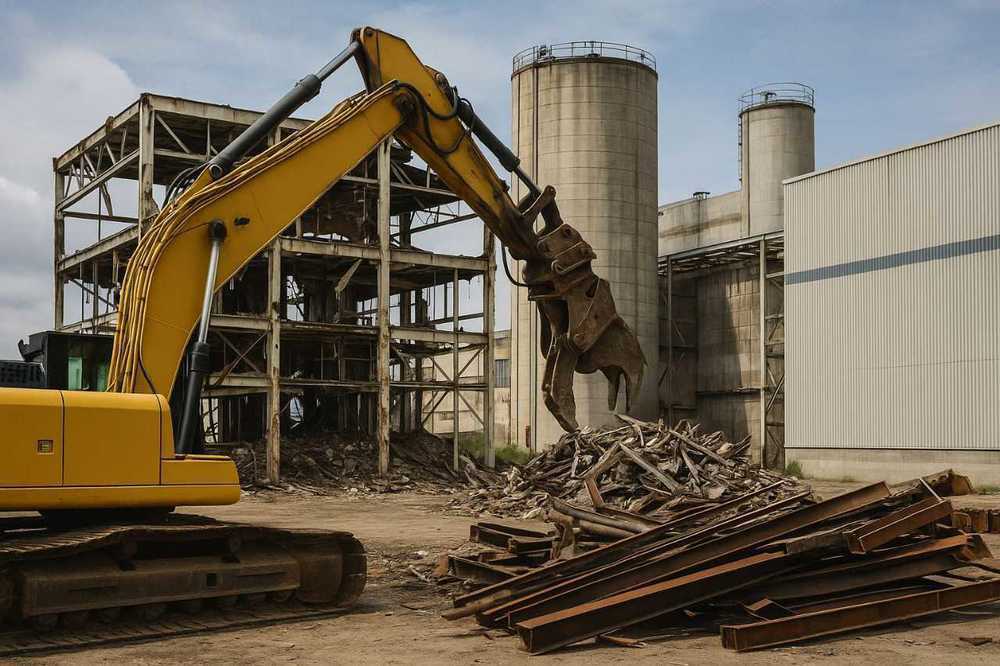The decommissioning of a production site following business termination represents a complex, multi-faceted undertaking that extends beyond physical infrastructure. It necessitates a structured series of strategic, legal, and operational actions designed to safely and efficiently conclude facility operations while meticulously addressing significant environmental and financial responsibilities pertinent to property, equipment, and ongoing operational commitments.
It begins with pre-planning and risk assessment, during which all site assets—such as machinery, equipment, raw materials, and inventory—are evaluated to determine what can be sold, repurposed, or responsibly disposed of. Simultaneously, a comprehensive risk analysis is conducted to identify environmental, health, and safety hazards, including the presence of toxic substances or structurally unsafe buildings, in order to ensure compliance with regulations and limit potential liabilities.
The process commences with rigorous pre-planning and comprehensive risk assessment. During this initial phase, all site assets—including machinery, equipment, raw materials, and inventory—are meticulously evaluated to ascertain their potential for sale, repurposing, or responsible disposal. Concurrently, a thorough risk analysis is conducted to identify environmental, health, and safety hazards (such as toxic substances or structurally compromised buildings), thereby ensuring adherence to regulatory mandates and mitigating potential liabilities. Crucially, proactive engagement with the landlord is paramount to effectively manage the termination of lease agreements. This involves addressing potential penalties associated with early termination and negotiating the specific physical conditions for the return of the premises, including any requisite restoration and maintenance costs. In this context, it is imperative to acknowledge the consistent jurisprudence of the Italian Supreme Court of Cassation (Corte di Cassazione), which has affirmed that a commercial lease may be terminated by the tenant at any time for compelling/serious reasons (gravi motivi), rendering any contractual clause to the contrary null and void (in accordance with Article 27, paragraph 8, of Law no. 392/1978).
The subsequent phase involves environmental decommissioning. This encompasses the decontamination, removal, and appropriate disposal of hazardous materials in strict compliance with all applicable environmental regulations. Soil and groundwater may necessitate testing to confirm the absence of contamination. Furthermore, both hazardous and non-hazardous waste must be managed and disposed of through approved channels. Energy systems, such as boilers and generators, are systematically decommissioned and safely deactivated to mitigate associated risks.
Attention then shifts to machinery and inventory disposition. While raw materials or finished goods are often liquidated with significant discounts, machinery requires more meticulous attention. It is either sold, transferred, or scrapped based on its condition and future utility. A robust secondary market often exists for industrial machinery, supported by a network of intermediaries, resellers, and specialized agencies. Within industrial contexts, it is essential to ascertain whether this machinery benefited from Transizione 4.0 or Transizione 5.0 tax incentives, as the premature sale or decommissioning of these assets may trigger full or partial clawback provisions. A pivotal strategic consideration for the sale of industrial machinery and related plant assets is to initiate this process while production remains ongoing. This approach facilitates site visits by prospective customers or intermediaries, allowing them to observe the machinery in live operation and conduct thorough testing with the direct support of the plant manager. Once production has ceased, the capacity to test machinery is severely compromised, rendering sales significantly more challenging, and in many instances, unfeasible.
The final stage pertains to the closure of the facility and the site itself. Decisions are made regarding the future disposition of the building—whether it should be repurposed, sold, or demolished. All utility services, including electricity, gas, and water, are formally disconnected, and service lines are secured. Ultimately, the site is restored to comply with environmental, zoning, or municipal standards, which may entail landscaping, soil remediation, or comprehensive land reclamation, contingent upon the property's intended future use.

